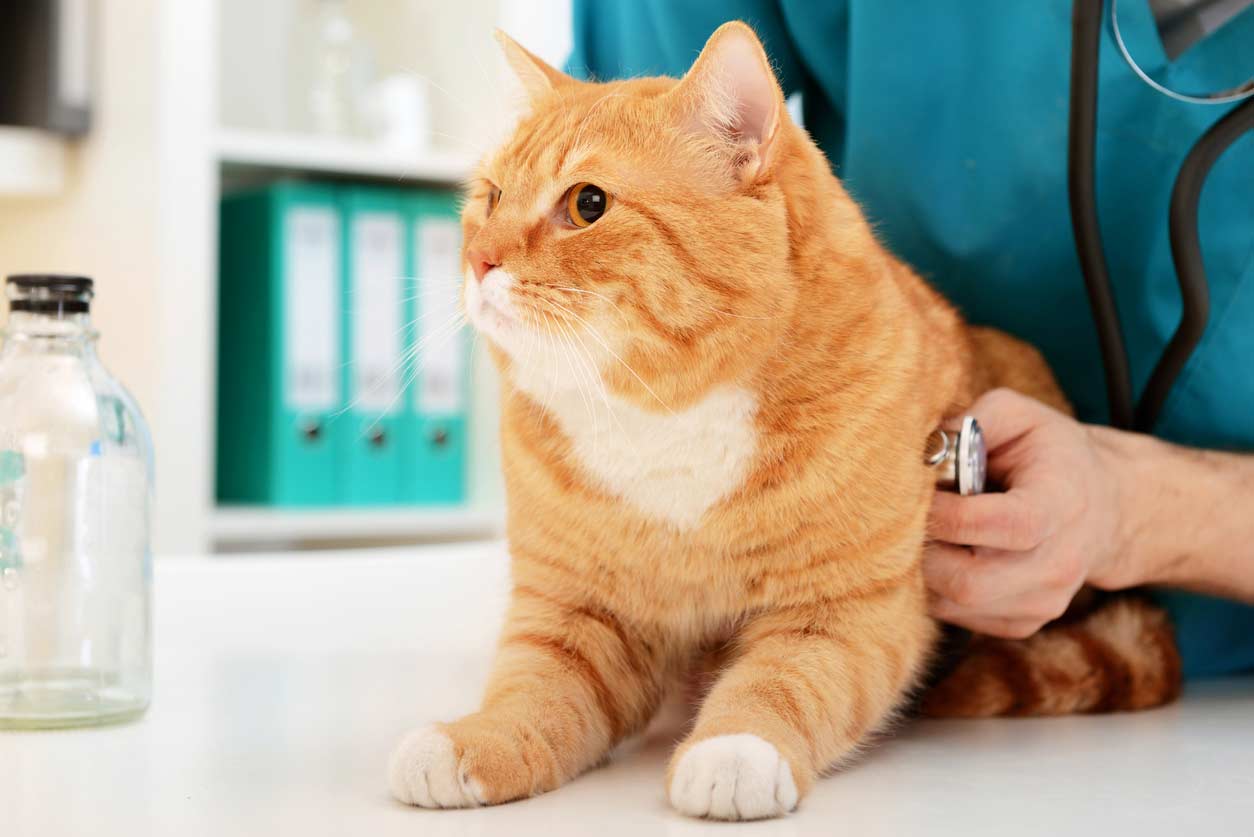How to Take the Stress out of Your Cat's Vet Visit

Fewer things strike fear into the hearts of cat owners faster than the thought of a visit to the veterinarian. That's because most cats don't like to go, and the trip could mean anything from constant yowling in the car to biting and scratching at the veterinary staff to a disgruntled kitty that hides for a day or two upon returning home.
Visiting the veterinarian routinely and when your cat shows any signs of illness, though, is crucial. Learn more here: "Why Should I Take My Cat to the Vet?" We've compiled this list of ways you can ease some of the stress surrounding a vet visit with your cat.
Get Your Cat Used to the Carrier
In order to stay safe on the way to and from the veterinary hospital as well as if you must spend any time in the waiting room, your cat will need to be in a carrier. Don't try taking your cat to the vet planning to carry him in your arms. Fearful cats are masters at getting away, and your cat could be in an extremely dangerous situation quickly if he isn't safely confined to a carrier.
Many cats don't naturally like being locked into and carried around in a pet carrier, so it's worth it to get him acclimated to it at home if you have time. Leave the carrier door open and place a cozy bed or blanket inside. Allow your cat to wander in and sleep on his own. Over time, you can practice closing the door for short periods, then closing the door and carrying him short distances.
If your cat doesn't go in to investigate the carrier on his own, you can try feeding him near it, then gradually moving the food bowl closer until it is in the carrier. You can find step-by-step instructions for getting your cat used to the carrier here: "Training Your Cat To Use A Pet Carrier."
If you don't have time to get your cat used to the carrier before you need to go to the vet, you can learn a quick, low-stress technique for getting him into it here: "A Helpful Tip for Getting Your Cat into a Carrier."
Get Your Cat Used to the Car
Car rides can also be a big source of stress for cats. This is another area that you can work on to decrease stress on vet visit days by acclimating your cat ahead of time. Once your cat is used to the carrier, you can gradually get him more accustomed to the car by taking trips that get a tiny bit longer each time. Even a trip around the block and then back home for treats and rest is a great way to start out.
If your cat gets car sick, anxiety is often the cause, so desensitization, or gradually getting him used to car rides, can help. You can learn more about the technique for this here: "Car Sickness in Cats."
Get Your Cat Used to Being Handled
When your cat is at the vet, he will need to be handled by the staff and doctor. Getting weighed, having a full physical exam, and being restrained for procedures like claw trimming, vaccinating, and blood drawing can all cause stress in many cats.
You can help your cat tolerate this handling better by gradually getting him used to such things at home. When you get a new kitten or even an older cat, you should start gently and carefully handling his paws, touching his ears, and picking him up for short periods. Of course, use caution, especially if your cat is older and has already shown that he dislikes these types of manipulations, but you can raise his tolerance by going slowly, calmly, gently, and using delicious cat treats as rewards for good behavior. Remember, never raise your voice or treat your cat roughly if he resists handling; these reactions will only cause the behavior to escalate.
Ask the Staff When the Quietest Time Is in the Clinic
When making your cat's appointment, you can ask the staff when they think the best time of day will be. Sometimes there is a time when the clinic is generally quieter or, on a particular day, the staff can look and see when there will be fewer dogs and less general commotion at the hospital. Of course, this may not always work because emergencies and unforeseen noise may always occur at veterinary clinics, but sometimes it can help.
Stay Calm Yourself
Your cat attunes himself to your emotions and actions, and if you are feeling anxious and upset, your cat will, too. Do your best to stay calm, speak softly, and don't get worked up. Remember, your veterinarian and the staff are trained to handle all types of animals. You can let them know that your cat is sometimes anxious about the vet clinic and if you are aware that he does better if handled in a certain way, pass that information on.
Bring a "Woobie" for Your Cat
If your cat has a favorite toy or blanket, bring it with you to the vet visit. You can put it on the exam table with him, so he has something familiar and comforting to smell and cuddle with. If your cat doesn't have a favorite toy or blanket, we recommend Muffin Blankets and these portable toys.
Keep Your Cat's Carrier off the Floor if Possible
When you are in a veterinary clinic's waiting room, especially if the practice also sees dogs, try to keep your cat's carrier up off of the floor. Even if it is up, take care to ensure that dogs can't come over and stick their noses into the front grate because that can be terrifying for a cat. Dog owners don't always stop their dogs from doing it because they feel that their pup is just being curious, and they don't understand that it can be extremely stressful for a kitty.
Stay in the Car with Your Cat Until the Exam Room Is Ready
If at all possible, especially if the clinic's waiting room is busy, keep your cat in his carrier in the car until your exam room is ready. Be sure to stay with your cat; don't leave him in the car alone. Stay alert, accessible, and ready to go in as soon as the staff signals for you and, of course, you'll need to set this up with them before doing it. Going straight from the car to the exam room can eliminate many stressful stimuli for your cat.
Use Calming Pheromones
Feliway is a substance that mimics the calming pheromones that a mother cat lets off to her kittens. It can help lower your cat's stress before, during, and after a vet visit. You can spray the inside of the carrier before putting your cat in and ask your vet if you can spray the exam room.
Keep Things Calm When You Get Back Home
When you get your cat home from the vet visit, give him his space. If he's had vaccines, monitor him for any reactions, such as vomiting or facial swelling, but otherwise, let him rest or hide for a while as he sees fit.
If you have other cats at home, they might hiss at or swat the kitty that was at the vet, and that can be stressful, too, so you may wish to keep them separated for an hour or so, and use Feliway to help all the cats stay calmer. Before allowing the cats back together, you can also take a cloth and wipe it over all of the cats' faces and rear ends, then back over each of the cats, to help normalize everyone's scents again, so the kitty that's been to the vet won't have odors that are different from the other cats on him.
You May Also Like These Articles:
How Do I Get My Cat into a Carrier?
A Helpful Tip for Getting Your Cat into a Carrier
Training Your Cat To Use A Pet Carrier
Why Should I Take My Cat to the Vet?
How to Avoid Costly Veterinary Bills for Your Cat
How to Be Prepared for Your Cat\'s Veterinary Bills
Notice: Ask-a-Vet is an affiliated service for those who wish to speak with a veterinary professional about their pet's specific condition. Initially, a bot will ask questions to determine the general nature of your concern. Then, you will be transferred to a human. There is a charge for the service if you choose to connect to a veterinarian. Ask-a-Vet is not manned by the staff or owners of CatHealth.com, and the advice given should not delay or replace a visit to your veterinarian.






